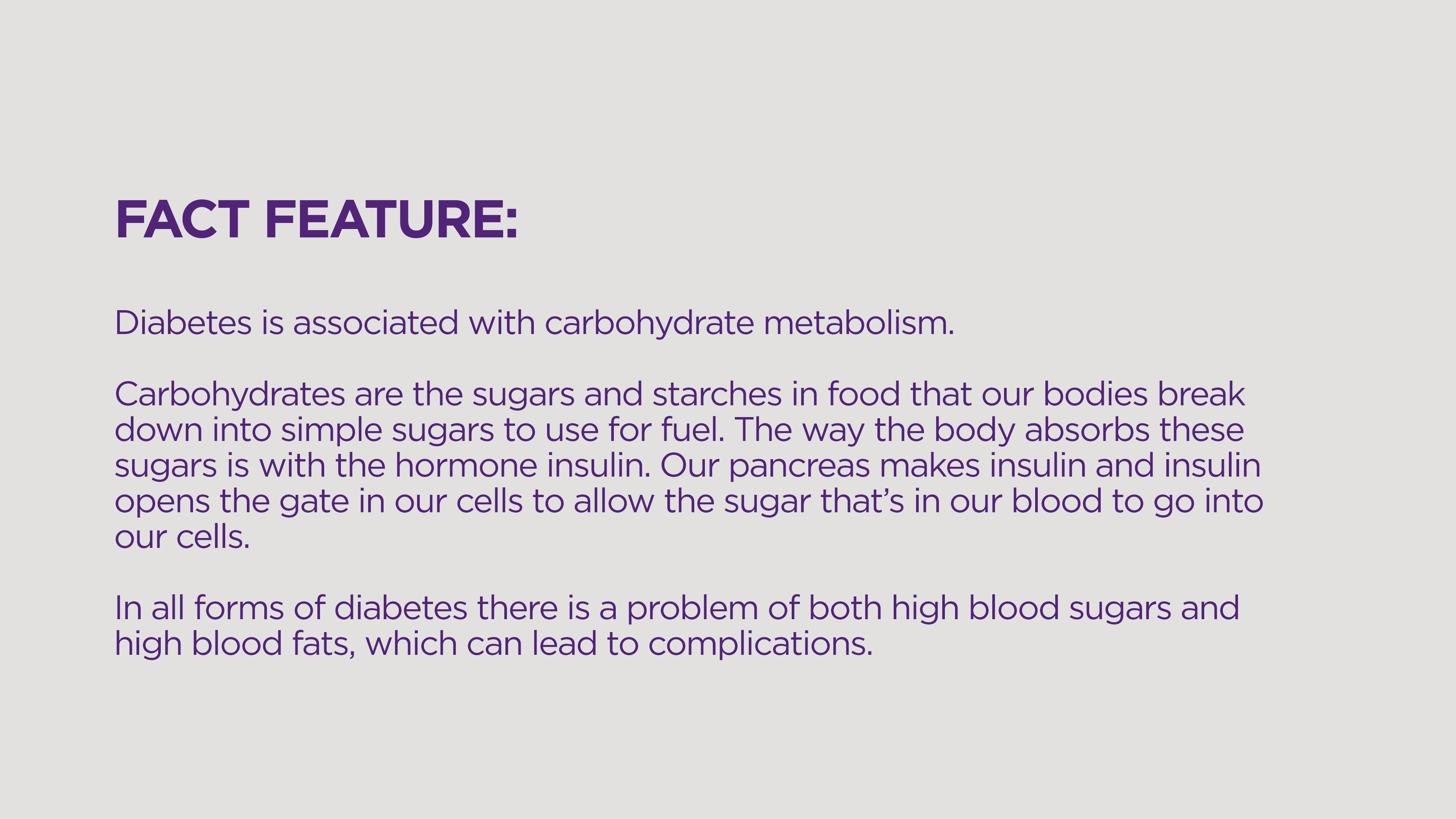Diabetes: Myths and facts
National Diabetes Week (10 – 16 July) promotes the strong mental and emotional impact that negative labels and beliefs can have on people living with diabetes. According to the Australian Centre for Behavioural Research in Diabetes, four out of five people with diabetes have experienced stigma at some point.
Here are some common myths and facts about diabetes that you may not know.
Myth: Diabetes is caused by eating too much sugar
Whilst Diabetes is a group of diseases that results in too much sugar in the blood, it is untrue that it is caused by eating too much sugar.
Both type 1 and type 2 diabetes have a genetic component. Type 1 diabetes is an autoimmune disorder which occurs when the body’s immune system destroys the cells in the pancreas which make insulin. Type 2 diabetes can be caused by both genetic and lifestyle factors, including obesity, not eating a healthy diet and not being physically active enough. It occurs when the cells in the body do not respond effectively to insulin.

Myth: Those living with diabetes shouldn’t play sport
Being sufficiently active is extremely beneficial for people with diabetes as it can positively affect their management of their chronic disease. Playing sport or exercising could help by lowering blood glucose levels, maintaining a healthy weight, and keeping their heart and blood vessels healthy, increasing insulin sensitivity, as well as reduce their need for medication.
Myth: Diabetes can be prevented
In most cases, someone’s risk of diabetes can be affected by factors like family history or ethnicity which cannot be changed. While the cause of type 1 diabetes is still unknown, it is an autoimmune condition that cannot be prevented and has no cure. Type 2 diabetes also has no single cause, but well-established risk factors do exist.

Myth: Those living with diabetes are dangerous drivers
There is no evidence to suggest that people with diabetes are less safe than other road users. This myth has been established through inaccurate generalisation and is based on the fact that some people with diabetes experience hypoglycaemia. Hypoglycaemia is the term for when the level of sugar in someone’s blood drops too low. However, this generally only occurs because of certain diabetes medications (insulin and some ‘oral hypoglycaemic agents’) mis-timed with eating and/or increased activity. Hypoglycaemia is therefore preventable.
Myth: Diabetes is not a serious condition
Diabetes is a ‘chronic condition.’ There is no cure although it can be managed through lifestyle modification and medication for some people. Those with type 1 diabetes are required to have regular insulin injections to manage their blood glucose levels, while people with type 2 diabetes may adopt lifestyle changes, oral medications, and insulin. Diabetes is progressive and needs to be managed effectively to prevent complications.
These complications can include:
• heart attack and stroke
• damage to eyesight
• reduced kidney function (which can lead to dialysis and kidney failure)
• nerve damage (especially to hands and feet)
• poor circulation (which can lead to amputation)
• erectile dysfunction in men
• dental issues
• increased risk and slower recovery from infection (e.g., influenza).
With over 280 Australians developing diabetes every single day, it is important to understand and acknowledge this chronic condition. Those who feel misunderstood, judged, blamed or guilty about their diabetes can cause them to stop getting the help and support they need to stay healthy. Start a conversation with people you know to stop the stigma.
Sources:
• Diabetes Queensland - Diabetes myths & facts: The truth behind common diabetes misconceptions
• Diabetes Australia – Myths & Facts
• Diabetes.co.uk - Diabetes Myths: 10 Common Diabetes Myths
